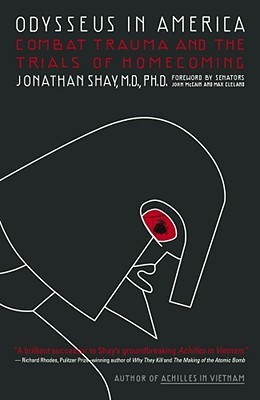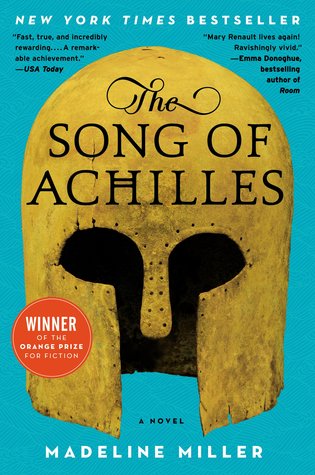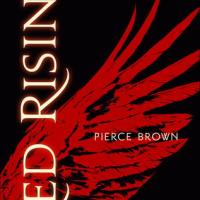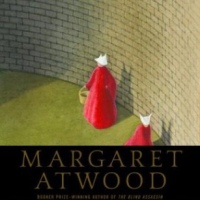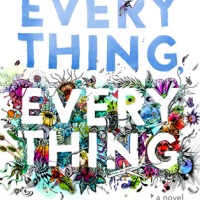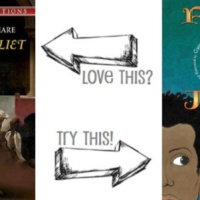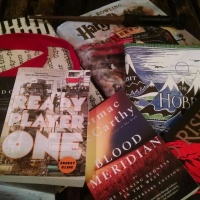You know what’s great?? Short stories. I love to incorporate short stories into my English classroom because they are endlessly versatile and ready in a pinch. Need to teach plot structure and Freytag’s Pyramid? Short stories have your back. Tone and Mood? No problemo. Point-of-view? Can do, buck-a-roo.
In fact, what seems like centuries ago, I posted about how I wanted to spend my summer reading short stories so I could add more of them to my teaching repertoire this coming year. I came up with a long list of well-known short stories and split that list into two lists: ones I had already read and ones I needed to read. Click the link above to see those original lists.
I’ve been missing on here for a while, I know. Teaching, unsurprisingly, is all-consuming. However, I’ve still been making a considerable amount of progress on my goals. In fact, as is usually the case, my type-A brain decided to process and organize the excess of information via a Google spreadsheet. It is extremely “extra,” but within the first few weeks, we were <ctrl> + <f> all up in that thing.
However, in my eagerness to explore short stories TO THE MAX, I somehow found myself exploring animated shorts, as well. (Don’t worry, they have a separate tab on my spreadsheet; I’m not an animal.) So, because this is my blog and I do what I want, I’m going to share some of the “shorts,” as I’m calling them, that help me teach different subjects. Many of those short stories from the list will make appearances in these posts. This go-around, the focus is on PLOT.
Freytag’s Pyramid/Plot Mountain
BACKGROUND: For the first couple of weeks, students don’t have their PLDs (we’re a one-to-one school, so all students have school-issued “Personal Learning Devices”), so we have to do everything on paper until we get those. We start the year with a unit on Narrative, so we broke that into segments and used short stories and animated shorts throughout the unit. Historically, they love this unit.
“Piper” is the first one we watch together. Students have a handout with definitions of each of the steps of Freytag’s Pyramid (or Plot Mountain, as we usually call it) and are asked to map out the steps of three animated shorts. “Piper” is an easy one to go over together, since it follows the steps exactly and each step is clearly defined.
“The Present” has to be my favorite animated short of all time. I’m biased, since I have a tripod pup of my own, but this one is also great to use for Plot, since some of the steps shift and seem less defined. I usually allow them to pair up with a neighbor and talk through which moments in the short fulfill each step of the Pyramid. I go over it with them at the end; for my students, it helps them to be more confident in their ability to do this one their own if we don’t dive into solo work right away.
“Partly Cloudy” is another one that shifts the steps a bit. Overall, it is easy for students to work through this one without risking getting anything WAY wrong, so again, it instills confidence. This one, I ask them to do solo and we review it at the end. All this review and practice with animated shorts is leading up to them trying to complete the Pyramid with the short story, “Thank You, M’am” by Langston Hughes. We’ll talk about that later.
Bildungsroman, or “coming-of-age”
Now, once they’re clear on the steps of Freytag’s Pyramid, we shake it up a little bit by introducing the idea of a Bildungsroman, or a coming-of-age story. They have youthful protagonists who go through trials and grow and mature as a result of the experiences, so the main difference from Freytag’s is the Moral Growth step . We make sure to give kids handouts that clearly differentiate the changes in steps from Freytag’s to Bildungs, and then, as before, we review animated shorts together. The start by re-watching “The Present;” this is helpful because they don’t have to work to understand the plot, since they already know it. Now, they just have to adjust their prior understanding of it to incorporate moral growth.
Both of these animated shorts (“Ride of Passage” and “La Luna”) are watched and reviewed together after students are given time to work individually or in pairs to map the steps of the Bildungsroman Pyramid. Emphasis is clearly placed on the moral growth that occurs in each short, since that is the main difference from Freytag’s. Also, La Luna has some amazing ASMR moments and beautiful music.
“Thank You M’am” by Langston Hughes
In this short story, we see a young man named Roger who tries to snatch the purse of Ms. Louella Bates Washington. They get entangled and Roger falls, meaning that Ms. Louella is able to catch him and chastise him for his actions. During her reprimands, she notices that his face is dirty and he is hungry, which reveals that his home life might not be stable. She insists that he accompany her to her nearby home, where she offers to feed him after she insists that he wash his face. When given the opportunity to run and get away, Roger stays and does as he is told. As she feeds him, she finds out that Roger wanted to use her money to buy a pair of blue suede shoes, and she suggests that he could have just asked for the money. In the end, she sends him off with a full belly and ten dollars to buy those shoes.
After practicing Freytag’s and Bildungs with the animated shorts, we read this short story together and ask the students to use their notes to map both Pyramids according to the story. Most students are able to at least come close to identifying the appropriate steps, but sometimes, saying which point is “the moment of most suspense” or the “turning point” or the “moment of moral growth” can actually be subjective. Because of this, I tell my students that they have to be able to explain their thinking, and whether we agree step by step isn’t the point. For your reference, here is a version of the story and below is a link to a movie version. We don’t usually watch it; the story is enough.
Like I said before, kids really enjoy these lessons. Since we do this as our first unit, it also helps to break the ice and ease students into the rigor. Videos are almost always a hit, so it’s wonderful that they’re enjoying the learning that takes place. Once we finish talking about plot, we move to characterization and unreliable narrator, so I hope to find time to do posts for those, as well. We also made some big changes I’m proud of to old units, this year, and other big changes are on the way, so I’m hoping that I can stay up on grading so I can find time to continue posting.
As always, feedback is welcome, especially if you have suggestions for other animated shorts or short stories I should add to my spreadsheet!




































